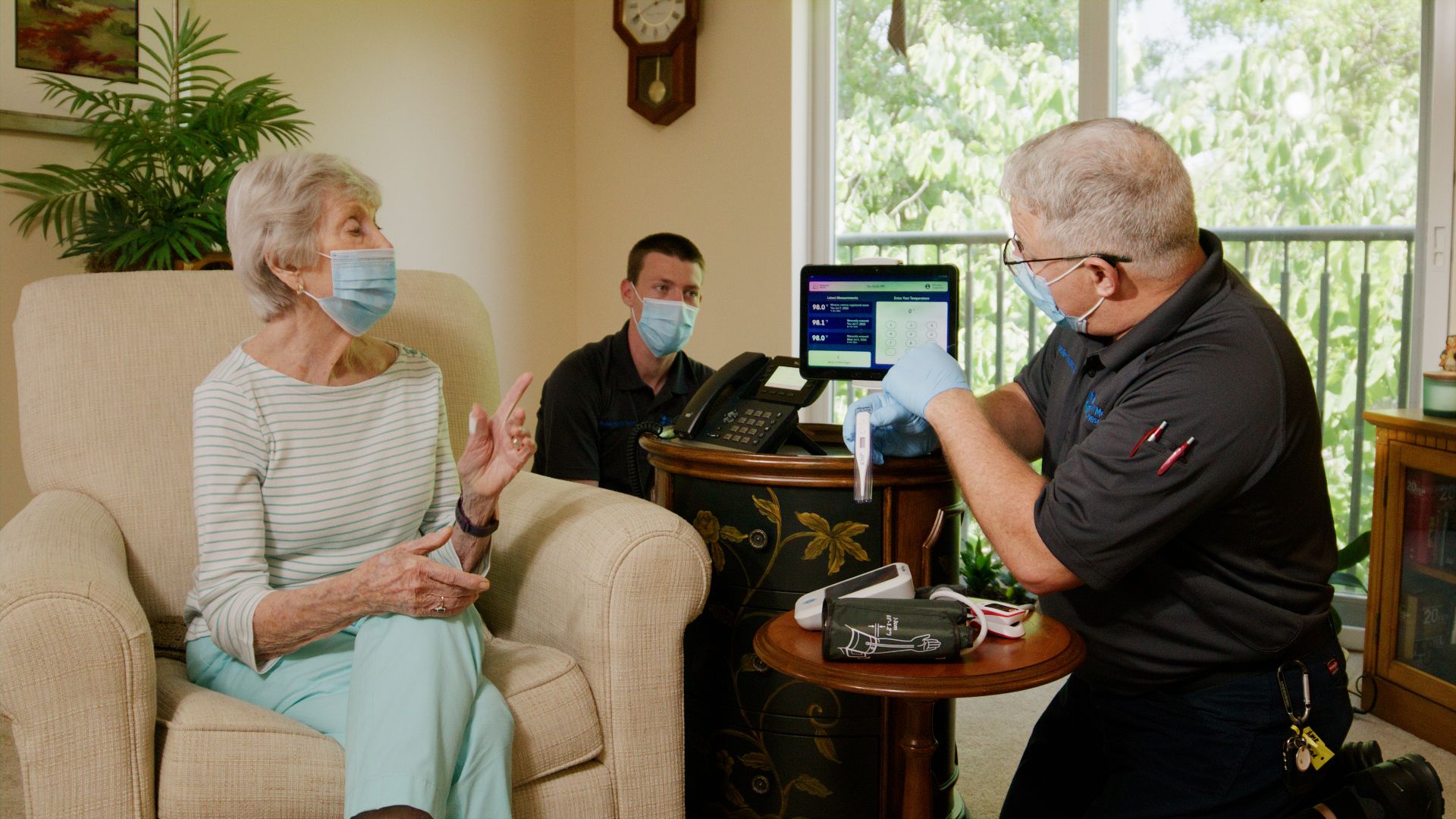Hospital-at-home programs see low mortality, study finds
Researchers with CMS found less than 1% of patients getting acute care at home suffered an unexpected death.
More health systems are offering acute care to patients outside of hospitals, and a new analysis finds a low mortality rate in those programs.
A new study finds low mortality rates in hospital-at-home programs. Saint Luke's Health System is among more than 100 systems nationwide offering acute care at home. (Photo: Saint Luke's)

Researchers with the Centers of Medicare & Medicaid Services examined hospital-at-home programs and found only a small number of patients suffered unexpected deaths, according to a research letter published in Jama Network Open on Nov. 3.
Researchers looked at outcomes from November 25, 2021 through March 20, 2023. In an examination of data involving 11,159 patients, only 38 patients, or 0.34% of the patients, suffered unexpected deaths, researchers said. The authors defined unexpected deaths as “a patient death while receiving acute inpatient care in the home, excluding those transferred to hospice.”
Patients receiving acute care at home “had a low mortality rate consistent with the hospital-at-home literature and minimal complications related to escalations back to the brick-and-mortar hospital,” officials said.
Most of the patients who were chosen for hospital-at-home programs were able to stay home and didn’t require readmission. The study found 7.2% of patients required to be transferred from home for a return trip to the hospital.
Among the 38 patients who died unexpectedly, all but three of the patients had been transferred back to the hospital. Most of those patients had received medical care at the hospital, including intensive care, for several days before they died, the authors wrote.
The authors noted some limitations in the study, including health systems choosing patients who had illnesses or conditions that could be treated successfully at home.
Only a handful of hospitals were offering acute care at home before the COVID-19 pandemic, but the federal government eased restrictions on such programs in 2020.
Hospitals aimed to move patients that still required acute care into the home setting to minimize exposure to COVID-19. As of Nov. 1, 127 health systems, and 302 hospitals, were offering acute care to patients at home in 37 states, according to CMS data.
Rami Karjian, the co-founder and CEO of Medically Home, a company that works with health systems to provide acute care outside the hospitals, spoke with Chief Healthcare Executive® recently about delivering care at home. Karjian says hospitals shouldn’t think of it as just “a program.”
“The most successful institutions that are doing hospital-at-home think of it as another floor or two or three floors, on top of their existing hospital. Those floors happen to be in the patient's homes,” Karjian says. “There's something temporary sounding about a ‘program’ versus a service line, a way that you're now going to make the standard of care for eligible patients to provide that care.”
With hospital-at-home programs, patients get a minimum of two in-person visits from nurses each day, under CMS regulations. Patients also get access to doctors and clinicians via video.
Michael Nassif, director of hospital-at-home at Saint Luke’s Health System in Kansas City, Mo., told Chief Healthcare Executive in March that he expects to see more health systems offering acute care in the home in the near future.
“I truly think 10 years from now, we're gonna say, remember how crazy it was we used to stick Grandma in the hospital for five days just to get … IV antibiotics, and you get confused and debilitated,” he says. “And I look forward to when we see that as kind of an archaic process and that there are better healthcare delivery models and more patient-centric healthcare delivery models.”
In this video, healthcare leaders talk with Chief Healthcare Executive® about the potential for hospital-at-home programs.
Why Sutter Health and SCAN Group are teaming on Medicare Advantage
April 14th 2025They have formed a partnership to offer more products and are looking to create a joint MA plan. We talked with leaders from Sutter and SCAN about the collaboration and why they say it can lead to better care for seniors.
Telehealth faces a looming deadline in Washington | Healthy Bottom Line podcast
February 12th 2025Once again, the clock is ticking on waivers for telemedicine and hospital-at-home programs. Kyle Zebley of the American Telemedicine Association talks about the push on Congress and the White House.